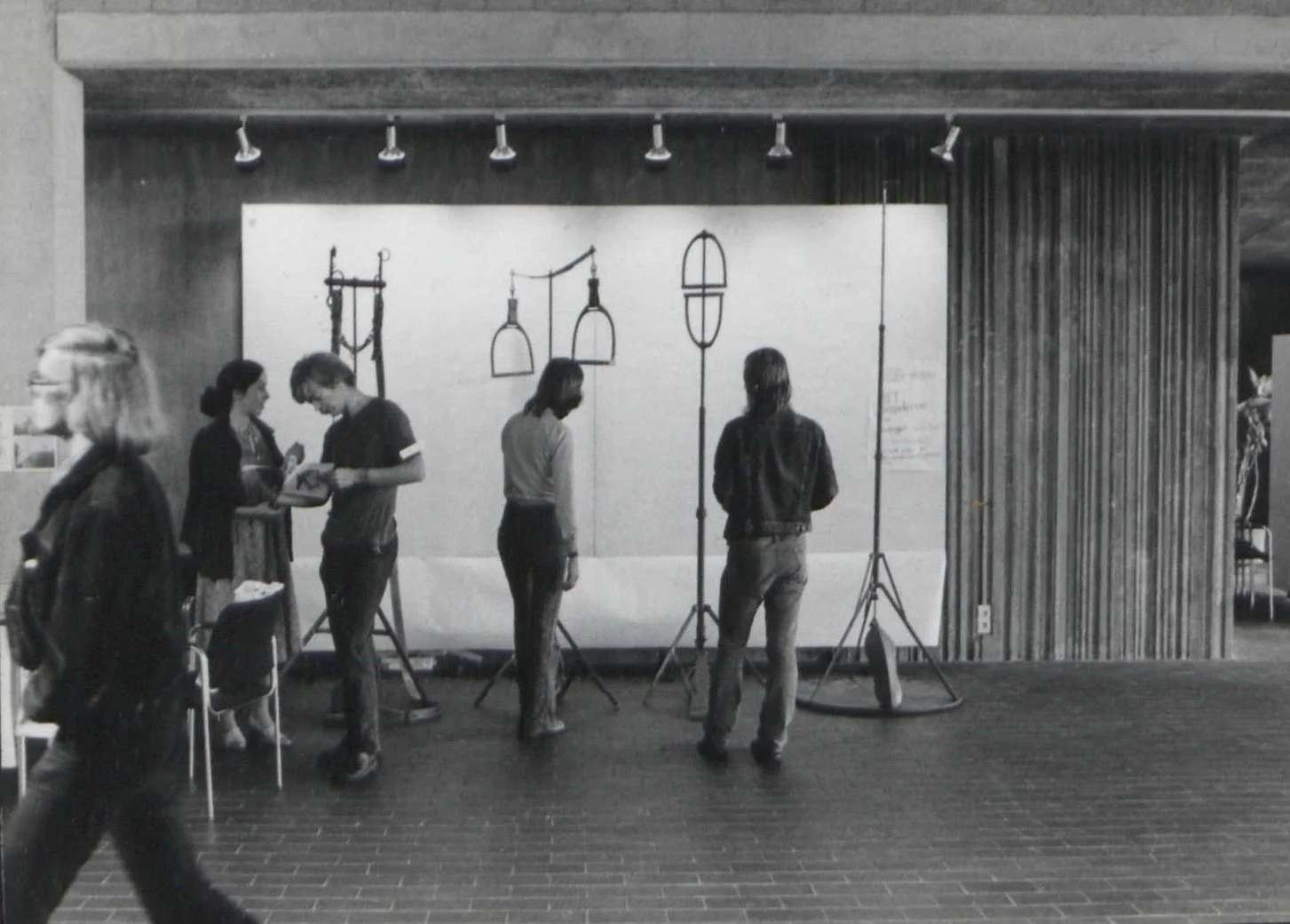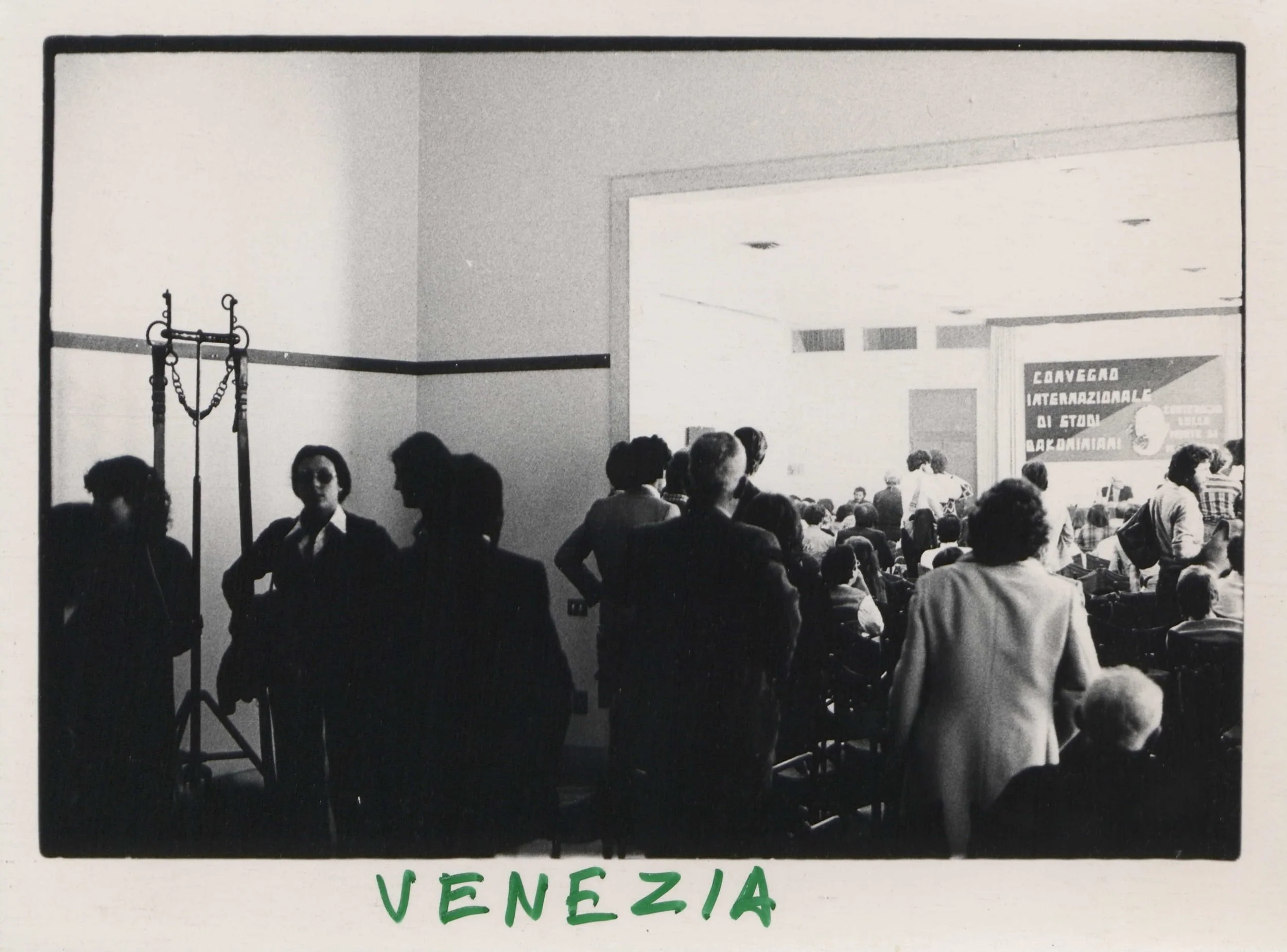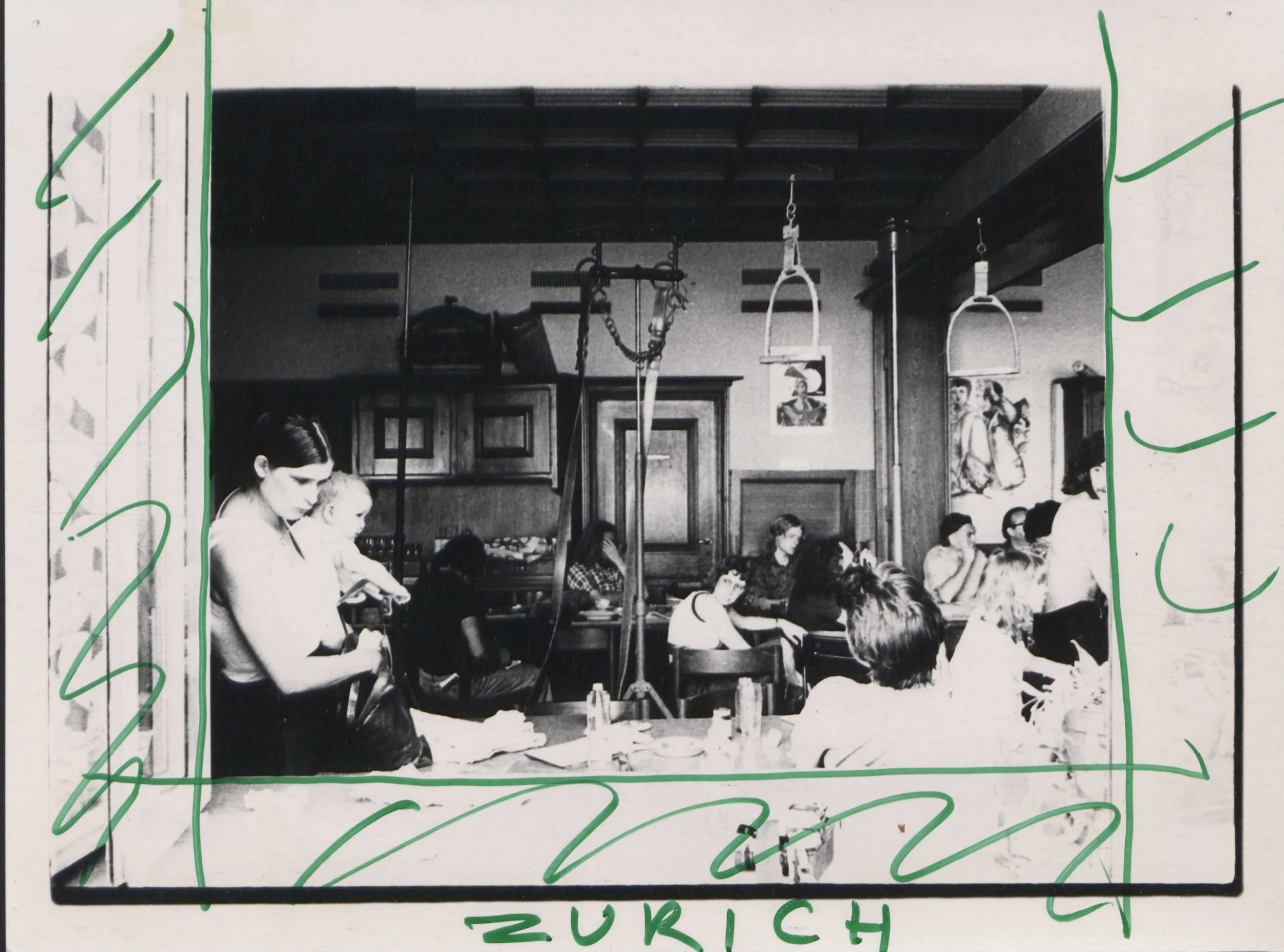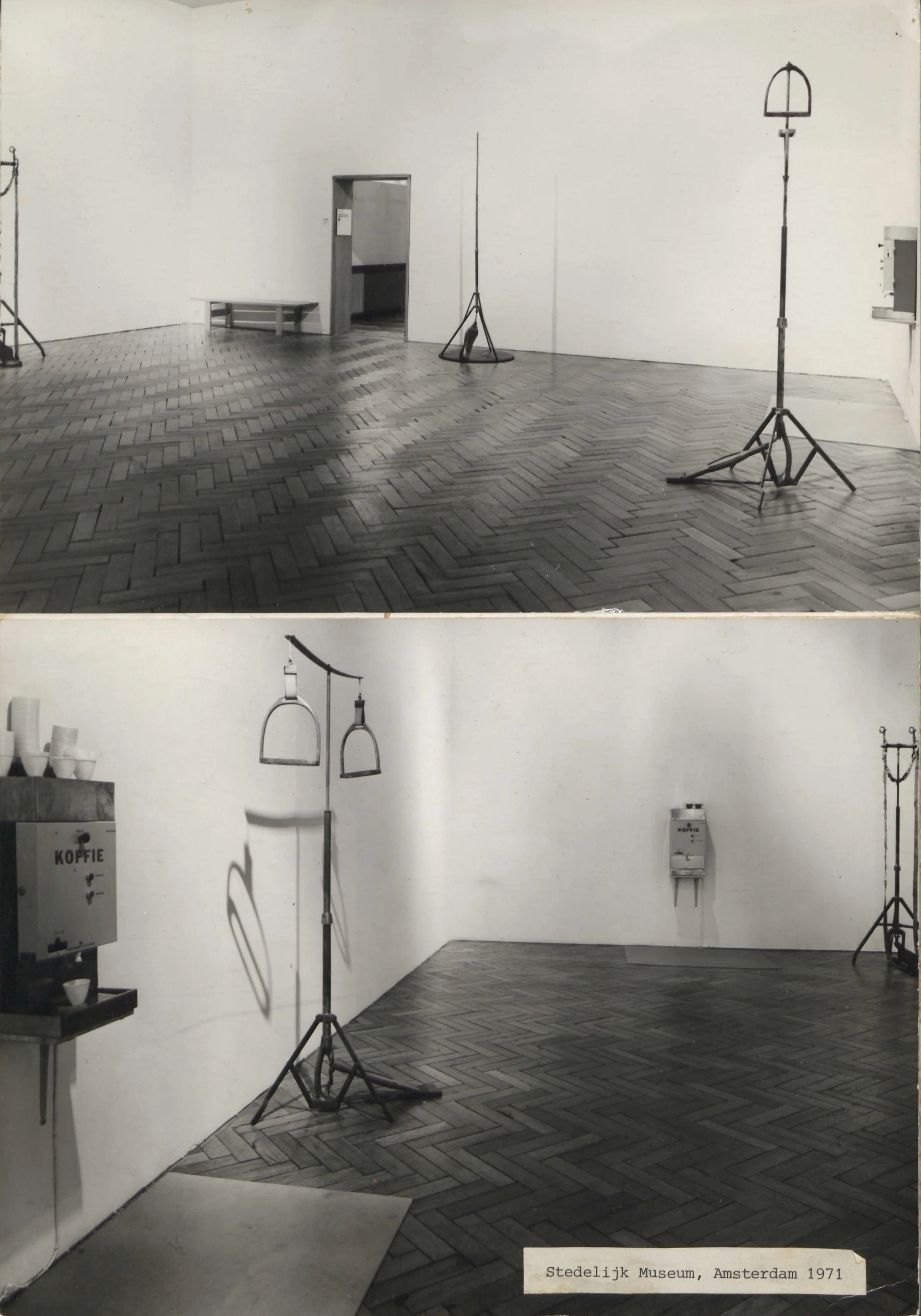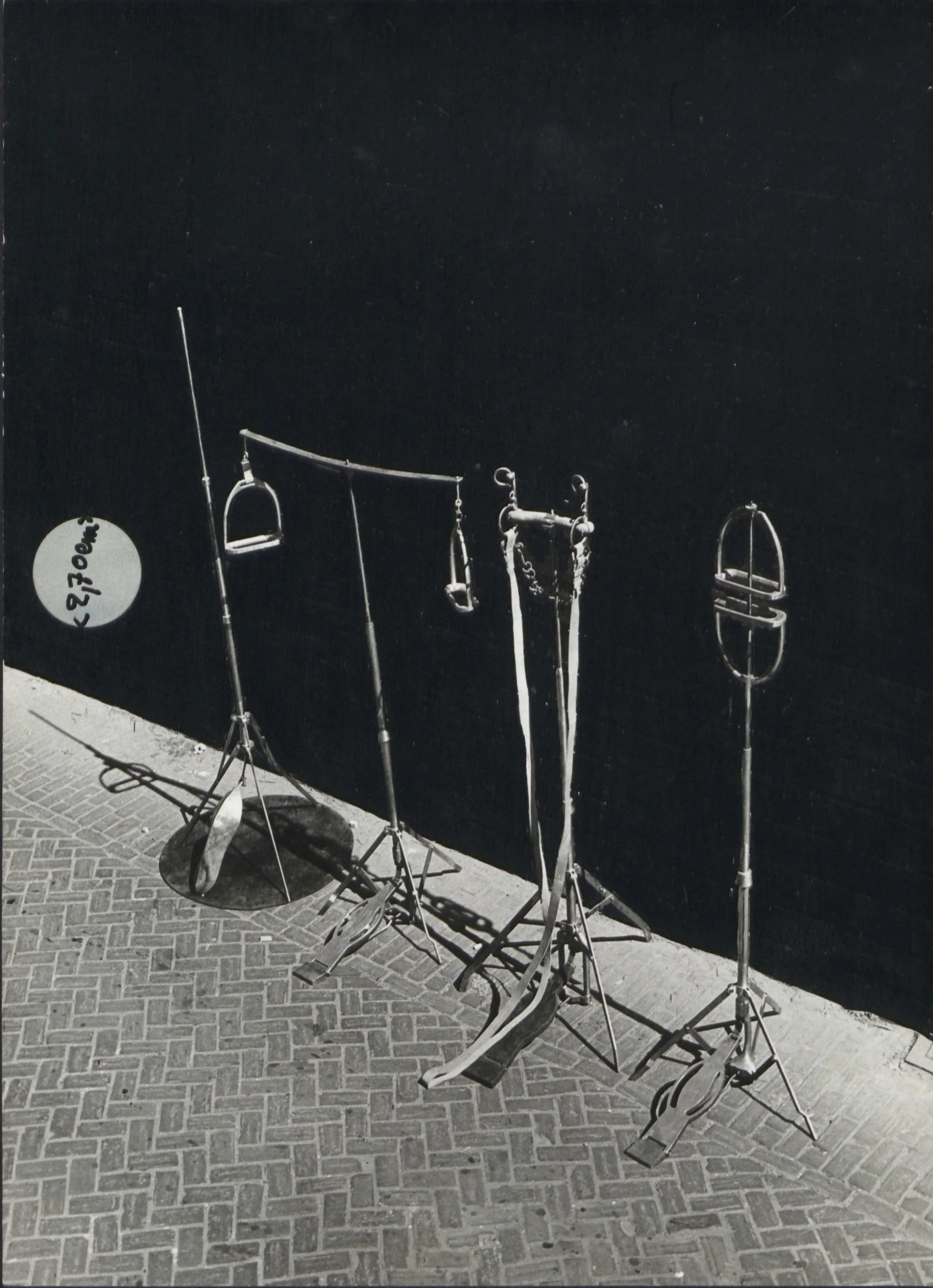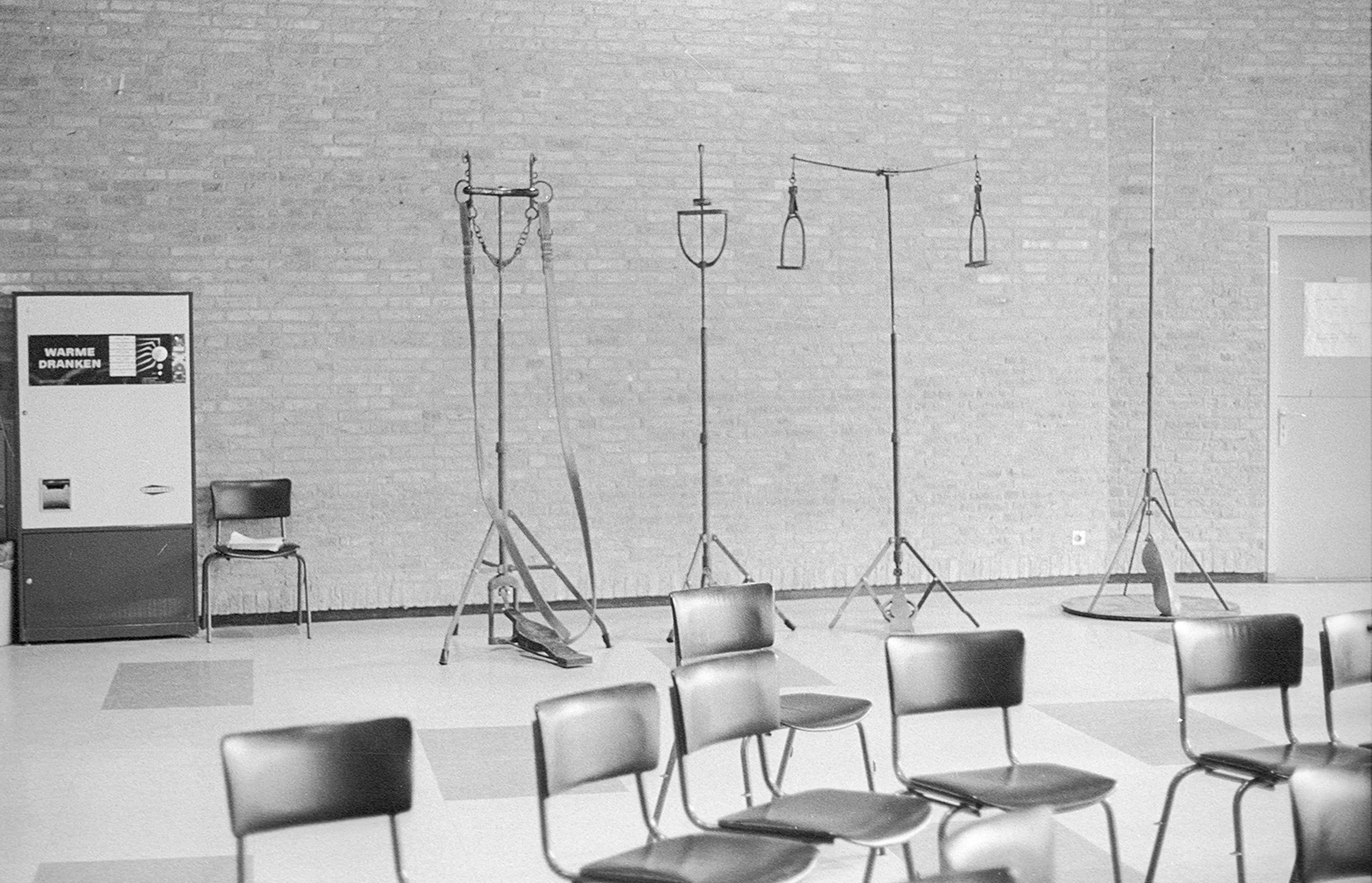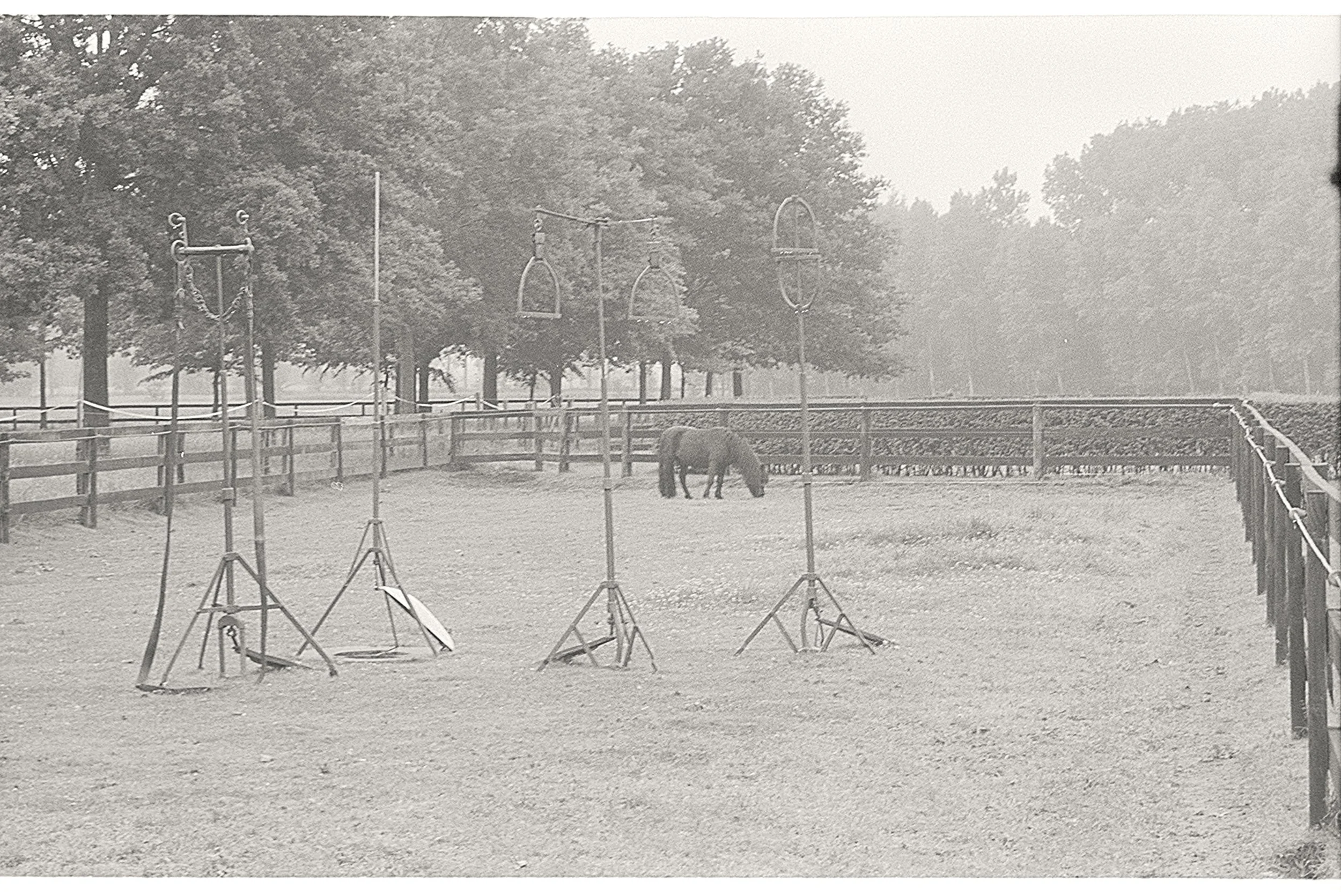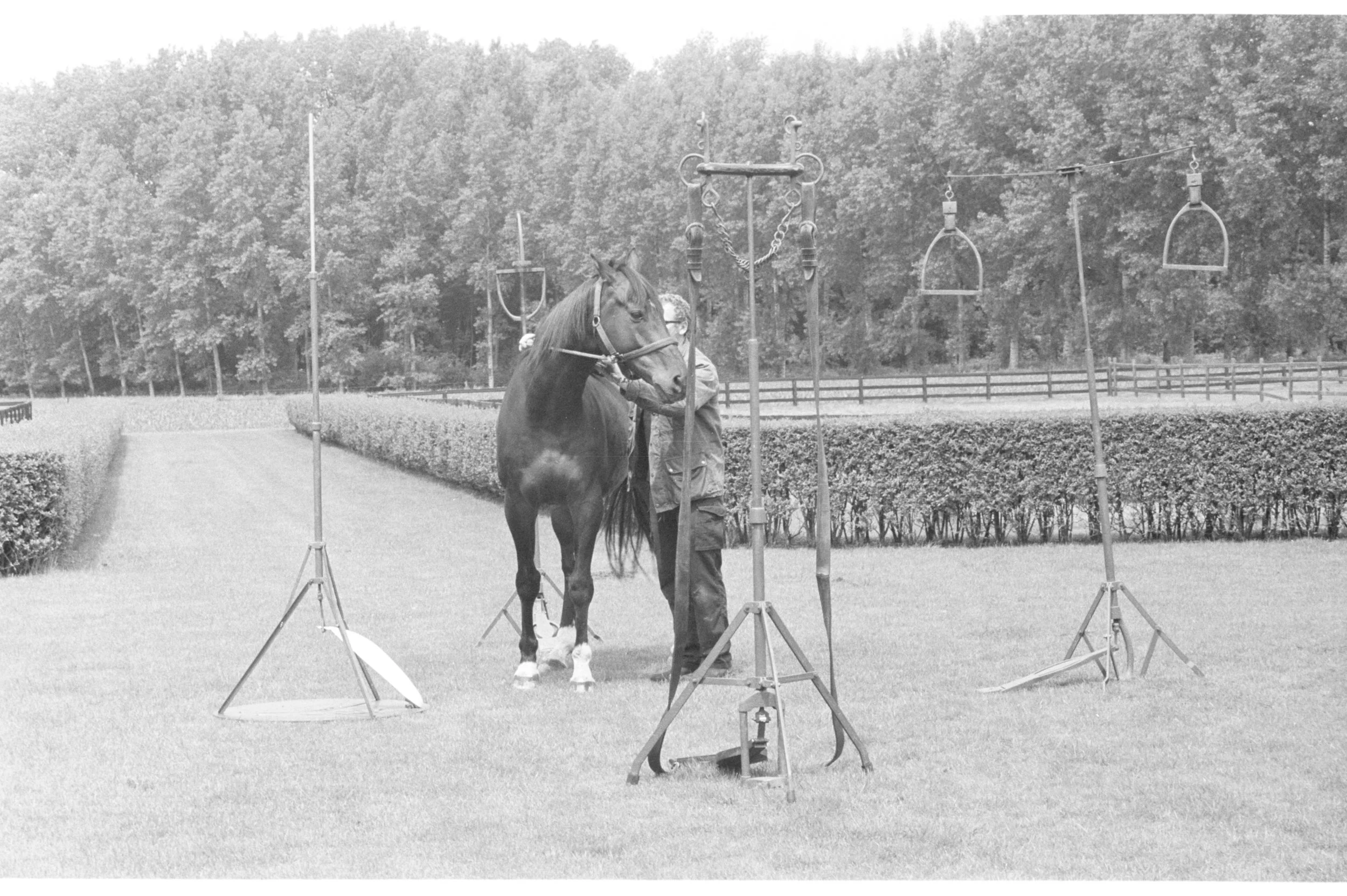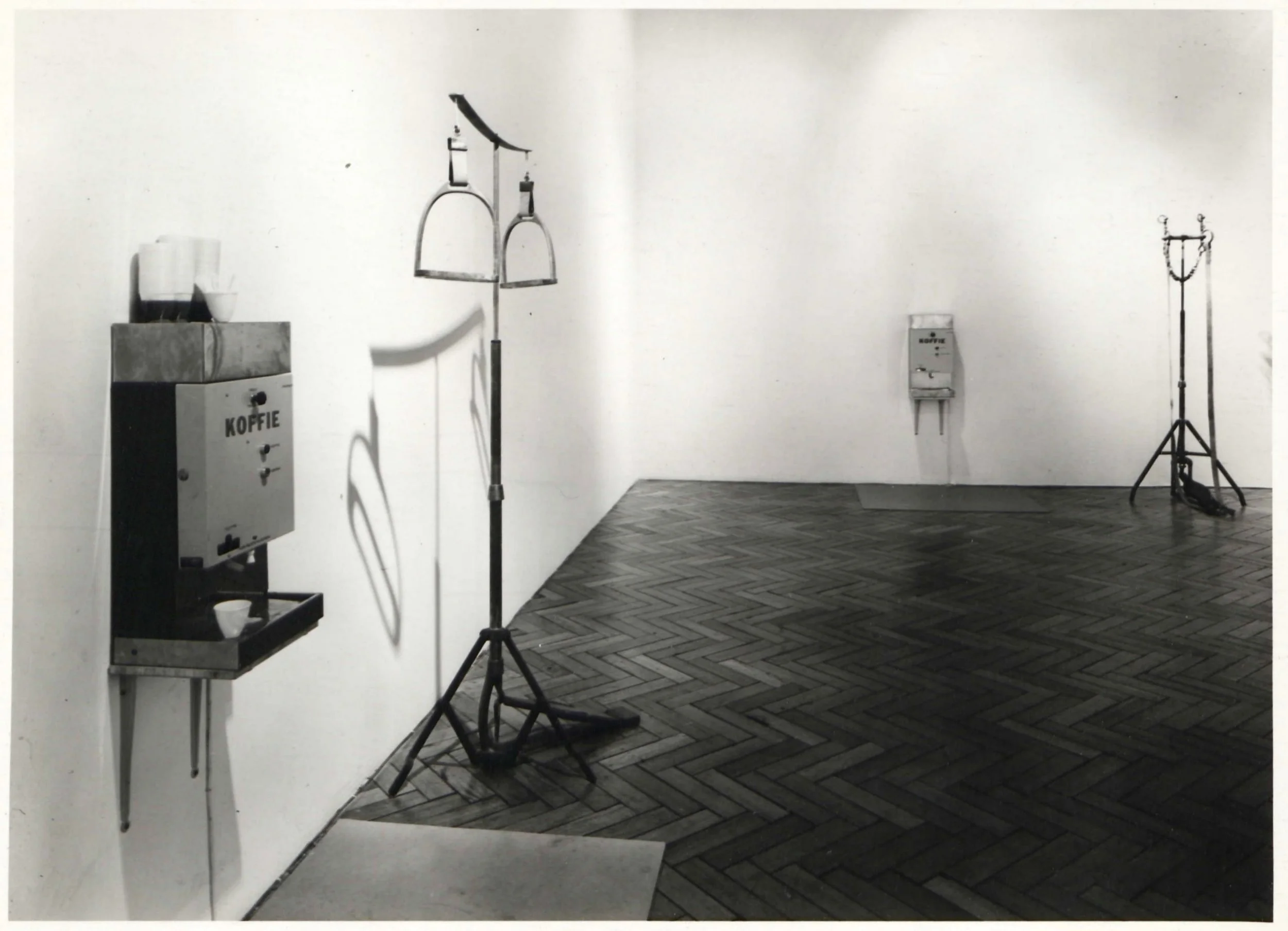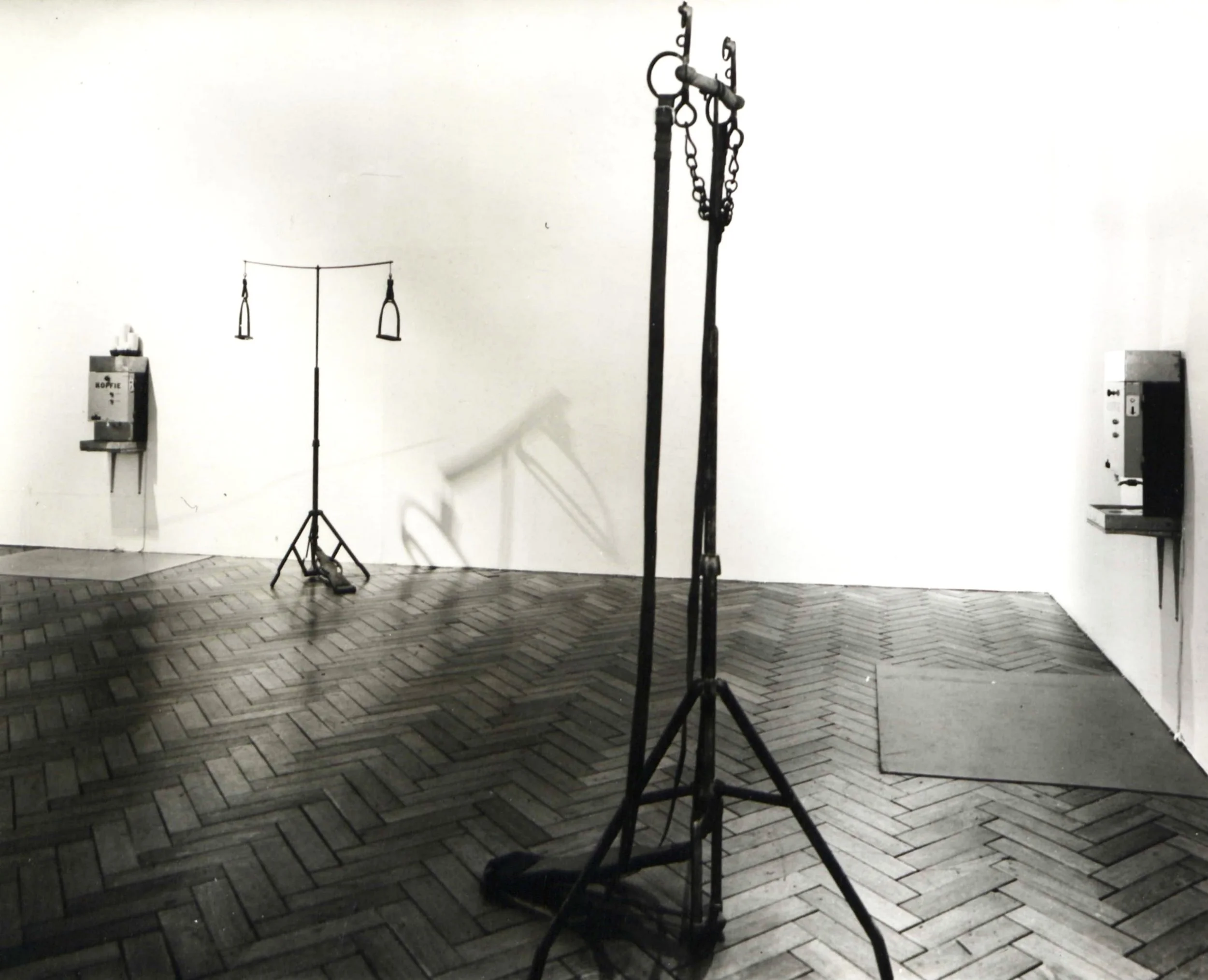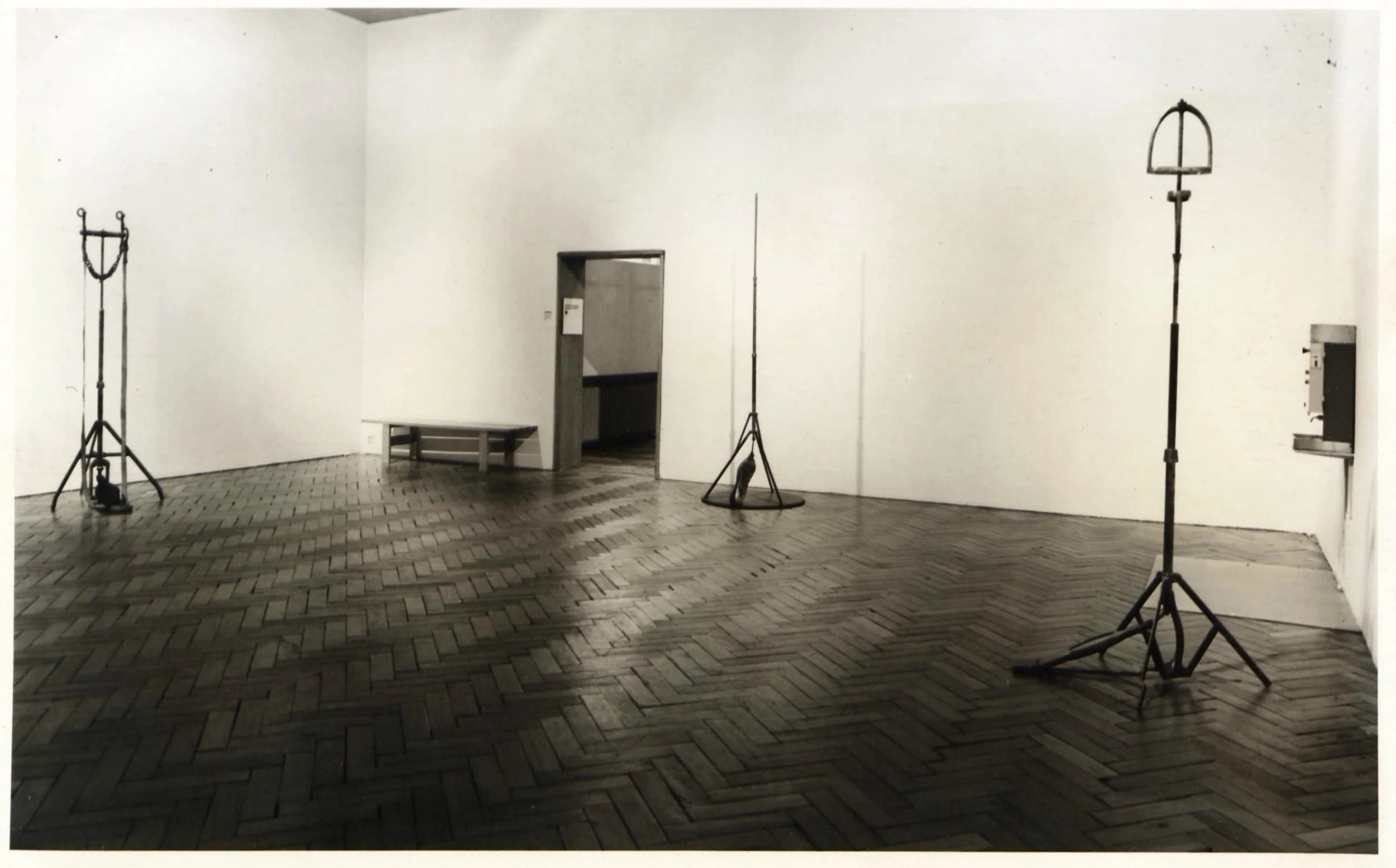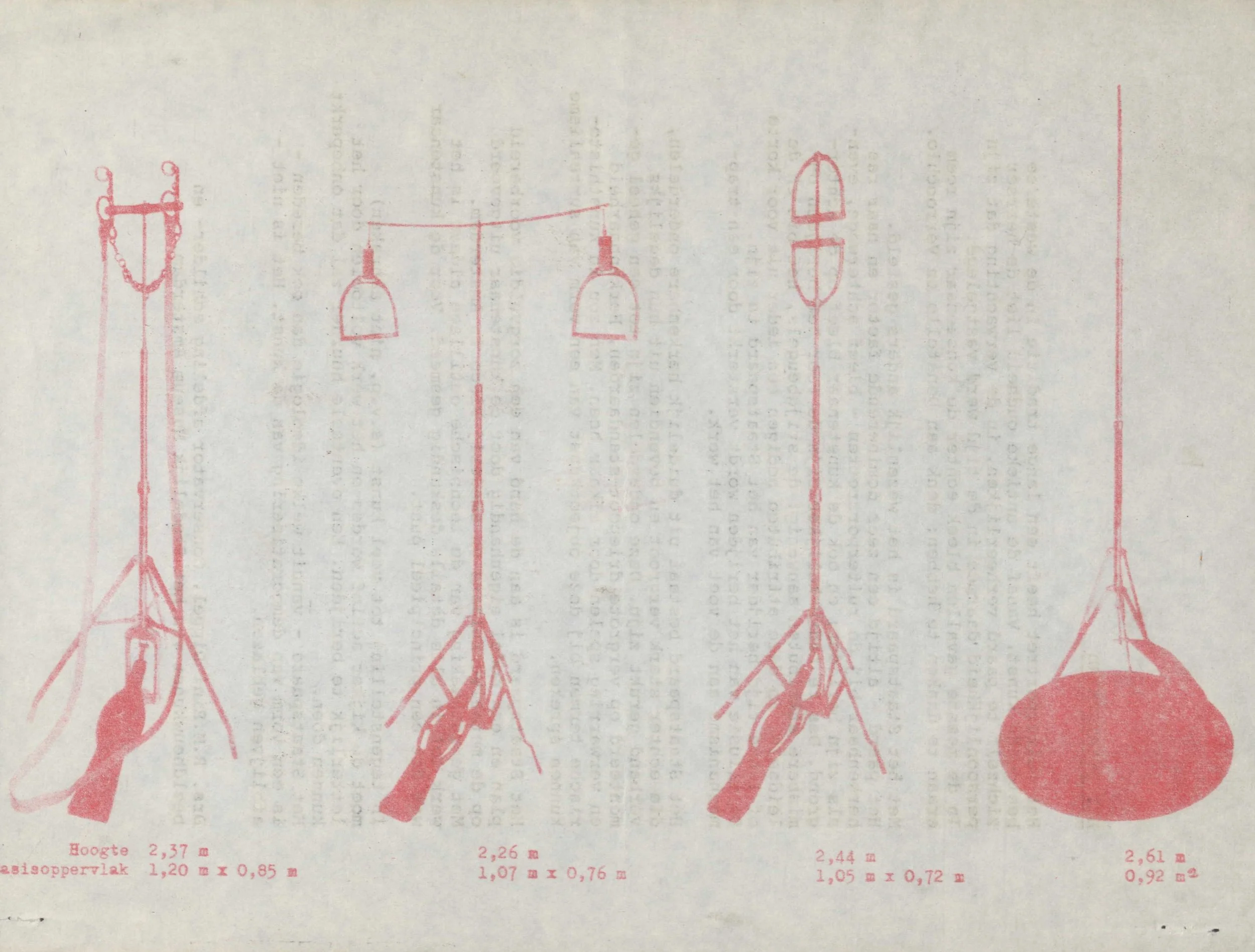The Horse of State
"The equestrian portrait has a long tradition in Western visual art. Since antiquity, rulers have glorified themselves on horseback, hoping their personality would thereby be immortalized. In most cases, however, it was the artist who gained the lasting fame—think of Donatello and Verrocchio. With Het Staatspaard, things are fundamentally different. The horse—always a dominant presence and recognizable by breed in equestrian portraits—is absent, as is its rider; and the artist remains in the background as well. What is all the more prominent are the indispensable attributes of riding: the stirrups, the bit, and the reins. And these attributes invite anyone to become, for a short or long time, the rider of Het Staatspaard.
The illusion of riding is enhanced by a pedal mechanism at the foot of the piece. Het Staatspaard consists of clearly recognizable parts that are, however, greatly enlarged and removed from their everyday context. These parts are assembled into a whole on oversized tripod stands. Recognition and confusion interweave. In art historical terms, one might speak of a form of surrealism in this object art.
Reverse of rental contract Het Staatspaard.
Het Staatspaard was personally executed by the artist according to a carefully prepared plan and model at the metal workshop and forge Placo in Amsterdam. Using the technical equipment available there, the work was expertly forged in every detail. For the artist, this was a matter of principle. In contrast to much art (please do not touch), the viewer is expected to become active and complete the work by literally riding it. Any potential renter may do so without limitation.
Het Staatspaard, no matter from which ideology it is ridden, represents a form of democratization of art. It is not a ‘hands-off’ object.”
Translated from the Dutch text: 1975, Het Staatspaard, The Horse of State, Rini Dippel.
Poster Het Staatspaard, Convegno Internale di Studi Bakuniane, Palazzo Sceriman, Venice, 1976.
Timeline
1971
Fabrication of Het Staatspaard by the artist at the metal workshop of smederij Placo in Amsterdam.
1971
8 objecten, Ulf Moritz, Amsterdam.
1971
Atelier 9, Stedelijk Museum, Amsterdam.
1972
Vogelvrij en Functie, Koninklijk Museum voor Schone Kunsten, Antwerpen.
1975
Het Verpozingsmechaniek Staatspaard, V.E.S.V.U. congres "Economie en Staat", Vrije Universiteit Amsterdam.
1976
Der Erholungsmechanismus Staatspferdes, gedelegeerd door de Federatie van de Vrije Socialisten Nederland, La Centenaire de La Mort de Bakunin, Restaurante Cooperativo, Zürich.
1976
Il congegno ricreativo cavallo di stato, Convegno Internale di Studi Bakuniane, Palazzo Sceriman, Venetië.
1976
Kollektieve Kollage, Bakoenincongres, Sociale Academie den Elzent, Eindhoven.
2010
Beeld Denken, Stichting A TUTA PELA, Wassenaar.
Photocollage Alex Barbaix with Het Staatspaard. Photographer unknown.

